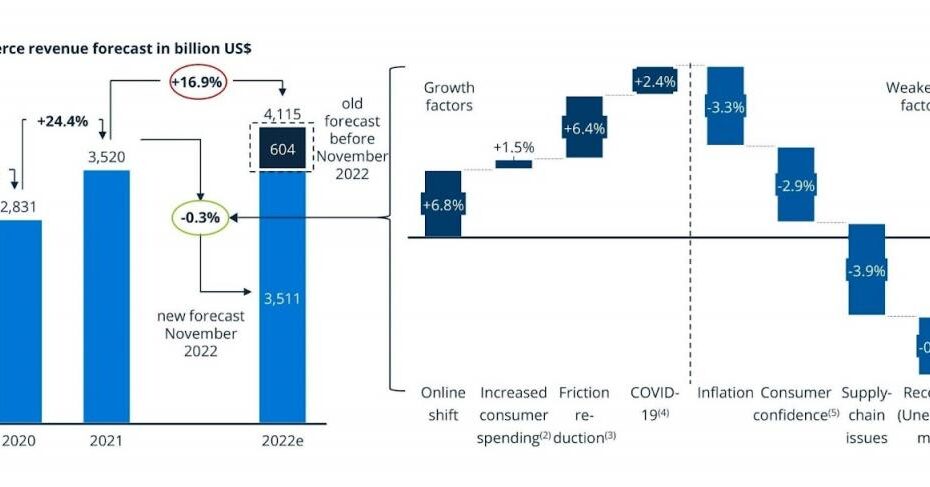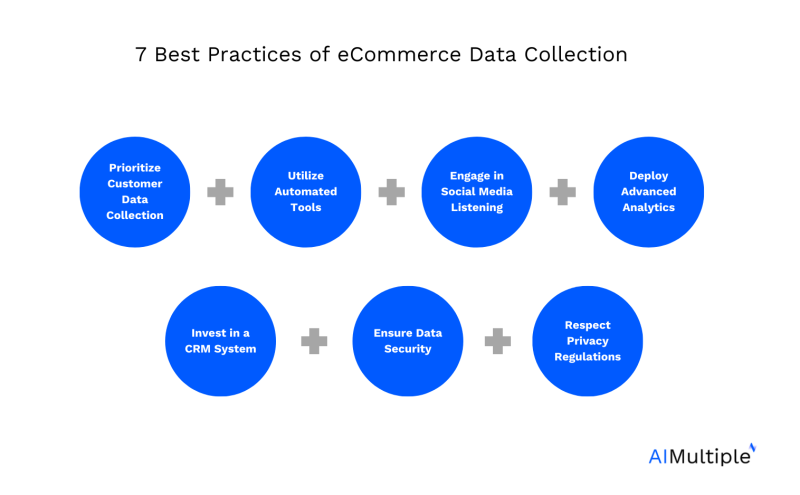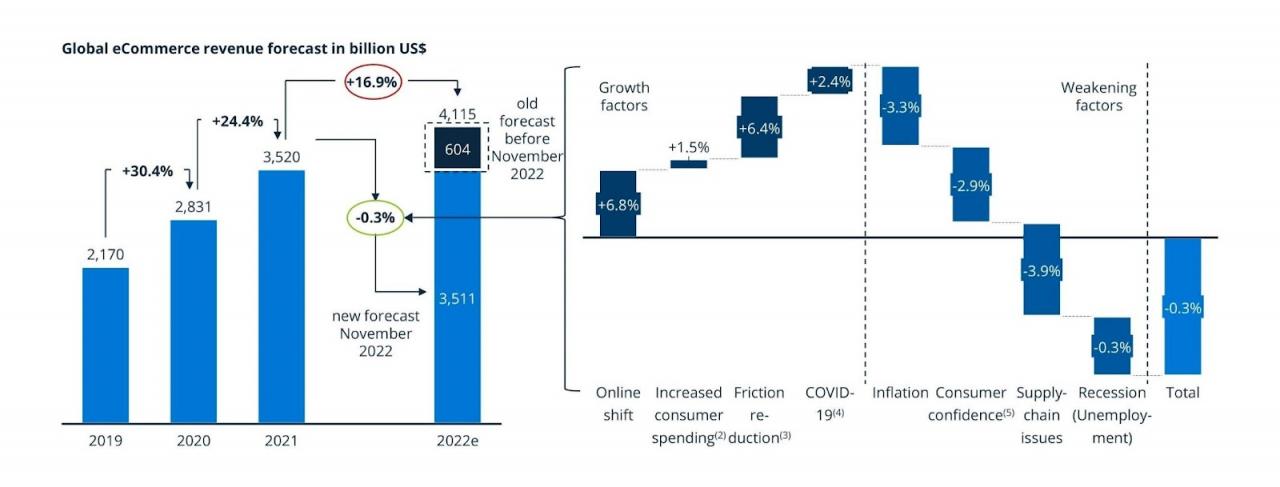As a data analyst and web scraping expert with over 10 years of experience extracting insights for ecommerce companies, I‘ve seen firsthand the critical role data plays in online retail success.
In today‘s complex digital marketplace, data provides the visibility ecommerce leaders need to make strategic decisions and forge resilience amid volatility. Armed with data-driven intelligence, retailers can identify consumer trends, analyze competitors, capitalize on technologies, comply with regulations and plan for the future.
However, to truly harness data‘s potential, businesses must follow certain best practices around collecting, managing and analyzing ecommerce data. This comprehensive guide shares 7 impactful methods and tips to streamline your ecommerce data collection process.
Why Data Collection is an Imperative for eCommerce Businesses
In 2022 alone, eCommerce sales grew 16% to reach $1.2 trillion globally. However, 72% of retailers also experienced revenue declines last year due to factors like:
- Rising consumer expectations
- Growing competition from new entrants
- Ongoing supply chain disruptions
- Surging digital marketing costs
Figure 1: Ecommerce industry faced myriad disruptions in 2024 leading to revenue declines for many retailers
To steer through such relentless change, ecommerce leaders need data-driven intelligence on:
Predicting Consumer Trends
By analyzing historical data, retailers can identify emerging consumer behaviors, interests and pain points. This foresight allows customization of offerings and experiences. For instance, Australia‘s leading retailer Woolworth uses data analytics to identify localized customer preferences and stock stores accordingly.
Gauging Competitor Strategies
Insights into competitors‘ tactics help retailers differentiate themselves. Data can provide intel around competitor pricing, promotions, product assortment, website functionality, logistics and more. Retailers can then emulate competitor best practices. For example, Wayfair attributed much of its success to competitive intelligence, allowing it to disrupt the furniture retail market.
Adopting Emerging Technologies
From blockchain to drones, data helps retailers capitalize on innovative technologies to enhance operations, delight shoppers and gain competitive edges. Ecommerce pioneer Amazon uses data to continually experiment and integrate cutting-edge tech innovations.
Complying with Regulations
Data aids compliance with evolving regulations around consumer privacy, marketplace competition, sustainability reporting and more. Non-compliance can incur major fines, as L‘Oreal experienced by failing to comply with EU transparency regulations.
Informing Strategic Planning
Data powers important business decisions like inventory planning, digital ad budgets, website enhancement, product assortment localization, dynamic pricing strategies and more. According to MIT research, data-driven companies are 4% more productive and 6% more profitable than competitors.
In summary, continuously collecting and analyzing market data is imperative for ecommerce leaders aiming to thrive amidst constant change. But what are the various methods for gathering all this intelligence?
7 Key Methods for Collecting eCommerce Data
Given the diversity of data available today, online retailers can utilize a combination of automated and manual techniques to harvest ecommerce data:
Automated Data Collection Methods
These techniques allow large-scale gathering of data with minimal manual efforts. Let‘s explore 4 key automated methods:
1. Web Scraping for Competitive Intelligence
Web scraping or crawling involves using bots to automatically extract data from websites. With over 1.74 billion websites online today, the web offers a data goldmine for ecommerce retailers.
Specifically, web scraping can gather vital data like:
- Competitor product catalogs, pricing and inventory levels
- Consumer sentiment, behavior patterns and reviews on online stores
- Market trends around product demand, pricing fluctuations and more
This data guides pricing strategies, inventory planning and other critical decisions. Advanced web scraping tools also allow targeted extraction of table data, image data and other unstructured data from websites.
Web scraping fetches data from websites automatically
According to surveys, over 80% of leading retailers rely on web scraping for competitive intelligence. The legality of web scraping depends on a website‘s terms and conditions, requiring due diligence.
2. Cookie Tracking for Behavioral Data
Cookies are small data files that track and remember user behaviors on websites – like pages visited, items added to cart, and search keywords used.
While cookies allow retailers to gather valuable consumer behavioral data, third-party cookie tracking is being phased out due to privacy concerns. However, retailers can still leverage contextual data from first-party cookies.
3. Social Media Analytics
Ecommerce companies can use social media analytics tools to garner consumer data from platforms like:
- YouTube
- Forums
- Review sites
This data encompasses demographics, interests, attitudes, influencers, trends and competitor marketing tactics.
For example, beauty retailer Sephora uses social analytics to identify micro-influencers relevant to their target audience. Such intelligence helps craft impactful social campaigns.
4. Applying Natural Language Processing on Reviews
Natural language processing (NLP) allows machines to comprehend nuances in human language. Ecommerce leaders can use NLP-based analytics on data like:
- Customer reviews
- Queries and conversations
- Feedback forms
- Emails and chats
NLP provides invaluable insights around customer sentiment, product feedback, frequently asked questions, recommendations and more. Fashion retailer ASOS employs NLP analytics on customer reviews to make informed product strategy decisions.
Alternative Data Gathering Approaches
While automated methods allow quick gathering of vast data, alternative manual techniques can elicit more qualitative, focused intelligence.
5. Analyzing Customer Reviews
Product reviews offer a treasure trove of customer feedback. Manually sifting through and analyzing reviews provides vital insights around:
- Product strengths and weaknesses
- Customer pain points
- Areas of improvement
- Emerging trends and opportunities
However, manually analyzing reviews across thousands of products can prove challenging without AI support.
6. Conducting Customer Surveys
Surveys allow retailers to directly source qualitative data by asking customers structured questions around preferences, experiences and satisfaction.
Though participation requires more customer effort, survey findings can highlight focus areas for improvement. For instance, UK retailer John Lewis uses customer surveys to identify changing needs and remain relevant.
7. Customer Registration and Emails
When customers sign up on ecommerce sites or fill out email preference forms, they reveal data on interests, communication channel preferences and shopping habits.
This data powers personalized recommendations and targeted marketing campaigns. For example, ASOS registration data helps segment customers for tailored email campaigns.
Now that we‘ve explored various data collection methods, let‘s examine some best practices for effective and ethical data usage:
7 Best Practices for eCommerce Data Collection and Usage
Over my decade as a web data expert advising ecommerce retailers, I‘ve found these 7 principles critical for success:
1. Prioritize First-Party Customer Data
At its core, ecommerce revolves around customers. So gathering first-party data on one‘s own customers should take precedence. Critical intel includes:
| Data Type | Examples |
|---|---|
| Demographic details | Age, gender, location, income level |
| Psychographic details | Interests, values, personality traits |
| Purchase history | Frequency, recency, products bought |
| Web behavior | Pages visited, search queries, clicks |
| Preferences | Communication channels, frequency |
| Feedback | Reviews, queries, pain points |
This data powers personalization andhelps segment customers for tailored marketing.
2. Combine Automated Extraction with Manual Elicitation
Automated tools help quickly gather vast amounts of data at scale. But manual elicitation through surveys, interviews etc. gathers more qualitative, focused insights.
I recommend retailers combine both approaches for comprehensive intelligence. This holistic view allows connecting insights across data sets for deeper analysis – like correlating customer feedback with their purchase histories.
3. Listen Continuously on Social Media
Today‘s consumers freely voice opinions on social media. Listening to these conversations via analytics provides priceless data around:
- Consumer sentiments, interests and pain points
- Influencer marketing opportunities
- Competitor strategies and benchmarks
- Industry and product trends
With this level of insight, retailers can respond rapidly to consumer feedback and capitalize on new opportunities.
4. Invest in Advanced Analytics
While gathering data is crucial, analyzing it effectively is equally vital. Advanced analytics like predictive modeling, machine learning and AI uncover non-obvious insights around:
- Hidden correlations and patterns
- Customer segment profiles
- Churn and loyalty drivers
- Future demand forecasting
- Inventory optimization
- Dynamic pricing
For example, algoritms can cluster customers into micro-segments with common traits to enable ‘segment-of-one‘ marketing.
5. Manage Data with CRM Systems
Investing in a robust CRM system helps retailers manage swelling customer data seamlessly. CRMs offer a unified interface to:
- Consolidate data from all customer touchpoints
- Understand holistic customer journeys
- Identify behavioral patterns
- Improve personalization and customer service
According to Salesforce research, CRM data helps create 36% deeper customer relationships.
6. Prioritize Data Security
Handling sensitive customer data necessitates robust security. Vital measures include:
- Encryption of data in transit and at rest
- Access controls, firewalls and intrusion prevention
- Anonymizing customer data where possible
- Secure data storage like cloud platforms
- Regular security audits and penetration testing
These controls help foster customer trust and avoid data breaches, resulting in hefty fines or reputational damage.
7. Comply with Data Privacy Regulations
While collecting and using data, retailers must respect consumer privacy rights and adhere to regulations like:
- GDPR: Requires consent for EU citizen data collection, provides data access rights
- CCPA: Gives California residents transparency and control over their data
- LGPD: Mandates consent and data protection safeguards in Brazil
Ignoring these regulations can lead to lawsuits and substantial penalties, as Victoria‘s Secret faced $1.1M in Brazil fines for LGPD non-compliance.
In summary, retailers must balance data collection with ethics, privacy and security to build customer trust. With the right strategies, data can drive transformative ecommerce success.
Key Takeaways from This eCommerce Data Collection Guide
- Continuous data collection provides ecommerce leaders with strategic visibility to counter volatility
- Combining automated extraction tools with manual elicitation techniques offers comprehensive intelligence
- Listening on social media helps retailers capitalize on new opportunities
- Advanced analytics like AI uncover hidden behavioral patterns to improve personalization
- CRM systems help manage swelling customer data for unified insights
- Balancing data collection with privacy, security and compliance is key for customer trust
As an ecommerce web data expert, my key advice is this: Lay the right data foundations with these methods and best practices, and your business will thrive on data-driven decision making.



